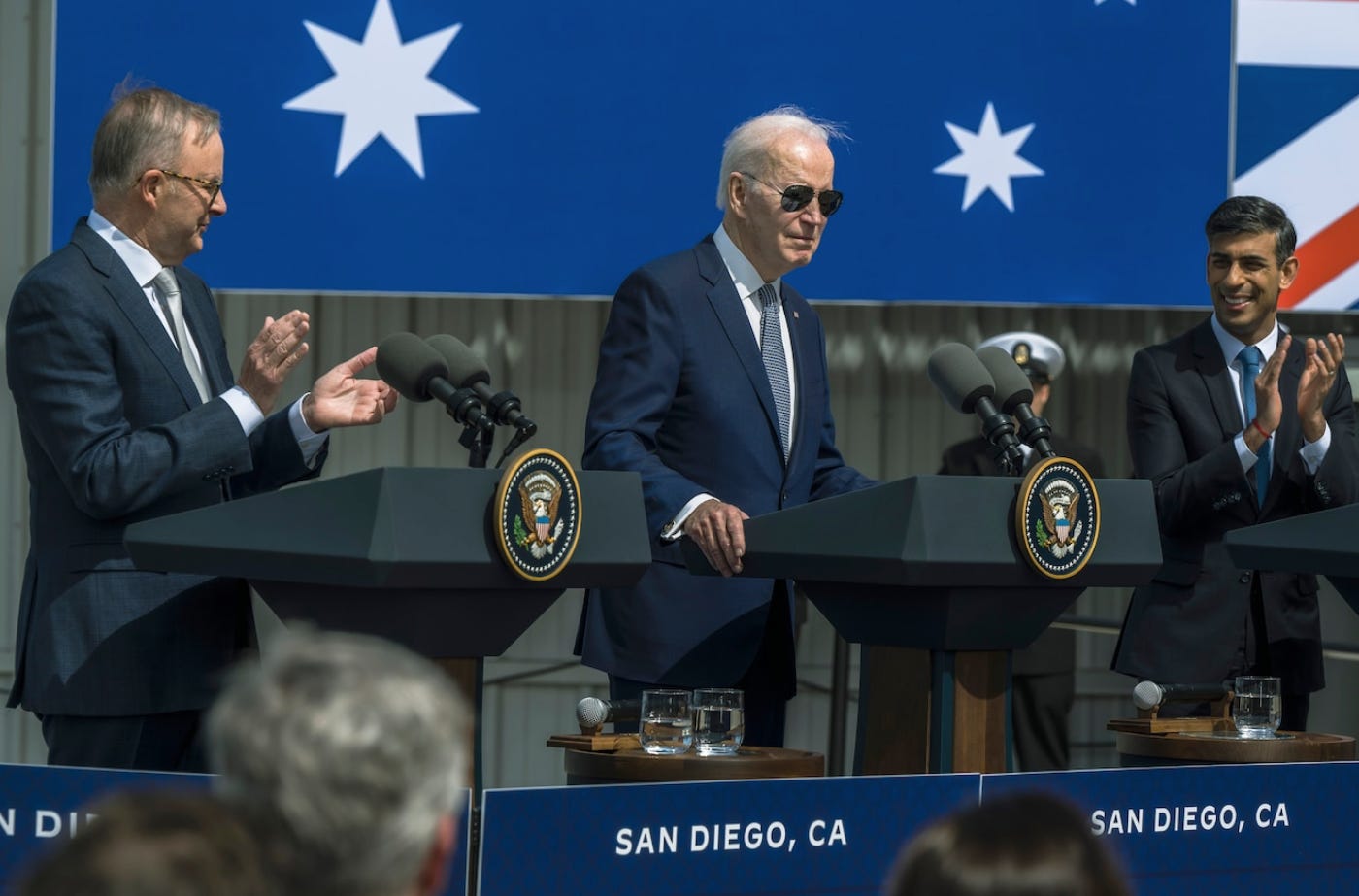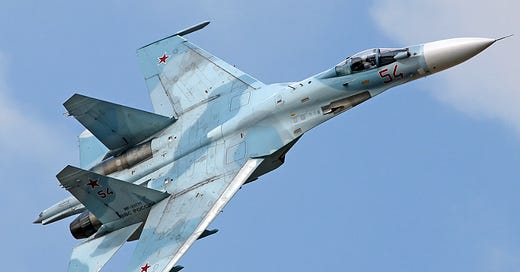Russian jets force down US drone over Black Sea
China critcizes Australia sub deal, US bank failure hits Chinese startups.
Two Russian Su-27 fighter jets intercepted and forced down a US Air Force MQ-9 reconnaissance drone over the Black Sea on Tuesday in an incident officials described as “unprofessional” and “dangerous”.
The Air Force said the Russian pilots flew in front of the US drone and dumped fuel several times. One of the planes struck the MQ-9’s propellor sending it out of control and causing US forces to bring the drone down in international waters
“Our MQ-9 aircraft was conducting routine operations in international airspace when it was intercepted and hit by a Russian aircraft, resulting in a crash and complete loss of the MQ-9,” US Air Force Gen James Hecker said in a statement.
The Russia Ministry of Defense in a statement disputed the US account and said the drone was operating “with the transponders turned off in violation of the boundaries of the area of the temporary regime for the use of airspace established for the purpose of conducting a special military operation.”
“As a result of a sharp maneuvering in the area of 9.30 (msk), the MQ-9 unmanned aerial vehicle switched to an uncontrollable flight with a loss of altitude and collided with the water surface,” the Russia MOD said.
“Russian fighters did not use airborne weapons, did not come into contact with an unmanned aerial vehicle and safely returned to the home airfield.”
US officials did not provide specific information on where the drone was operating or how close it may have flown to a Russian border other than it was in international airspace.
It’s doubtful the Russians interpreted the surveillance drone’s flight as “routine” -- as Pentagon officials sought to maintain -- given the US’s intelligence and logistical support to Ukraine.
The US has protested the incident to Moscow through diplomatic channels and asserted the US will continue to operate in international airspace. But the incident adds to a pattern of what the US sees as aggressive actions by Russian air crews “that could lead to miscalculation and unintended escalation”, the US statement said.
China says Australia sub deal ‘dangerous’
China Foreign Ministry spokesperson Wang Wenbin condemned the US and UK announcement of plans to provide Australia with nuclear-powered submarines.
“We’ve repeatedly said that the establishment of the so-called AUKUS security partnership between the US, the UK and Australia to promote cooperation on nuclear submarines and other cutting-edge military technologies is a typical Cold War mentality,” Wang said at a ministry press conference in Beijing on Tuesday.
“The latest joint statement issued by the US, the UK and Australia shows that the three countries, for their own geopolitical interests, have totally disregarded the concerns of the international community and gone further down the wrong and dangerous path,” Wang said.
President Joe Biden and the prime ministers of Britain and Australia convened in San Diego yesterday to announce details of their strategy to provide Australia with a new fleet of submarines. Biden said transfer of US and British submarine technology is intended to promote peace in the region and stressed the vessels would be "nuclear-powered, not nuclear-armed".

Monday’s announcement followed an 18-month consultation among the US, UK and Australia on the optimal pathway for upgrading Australia’s undersea naval capabilities while adhering to nuclear non-proliferation standards, a Pentagon official said on Tuesday.
The US and UK will immediately begin increasing port visits of conventionally armed, nuclear-powered submarines in Australia and will begin regularly rotating forces through Australia in 2027, Mara Karlin, a senior US Defense Department policy official told reporters at the Pentagon.
The US and UK will begin training Australian sailors in anticipation of sale of three Virginia-class US attack submarines to Australia in the 2030s. There is an option for future sale of two additional Virginia-class subs, Karlin said.
The final phase of the plan involves design and construction by Australia of next-generation submarines incorporating US and UK propulsion, combat control and weapon system technologies.
“It will only exacerbate arms race, undermine the international nuclear non-proliferation regime and hurt regional peace and stability,” Wang said.
China start-ups banked at SVB
The collapse of the $209 billion Silicon Valley Bank last week has hit an unknown number of Chinese tech startups, according to reporting by the financial news outlet CNBC and the South China Morning Post.
The US bank had an online system for opening an account that allowed the use of a Chinese mobile number for verification, according to one Chinese tech startup founder. With the backing of a mainstream venture capitalist, a Chinese firm could open an account within a week, compared to three to six months at major commercial banks.
Chinese firms that had cash at SVB include Zai Labs, Everest Medicines, MoSeeker, Andon Health according to company filings. Most said they were able to access funds after the FDIC took control of the bank, following a run by depositors last week.
US F-22s deploy to Pacific island Tinian
For the first time, US Air Force F-22 Raptors have deployed to the Pacific island of Tinian, part of the island chain of the Northern Marianas near Japan seized by the US at the end of World War II.
The rotation of Raptors, which ran March 1-14, is part of an exercise dubbed Agile Reaper 23-1, which is part of a new US military concept in the Indo-Pacific called ‘Agile Combat Employment’ designed to counter the potential threat from Chinese cruise and ballistic missiles to US and allied air bases in the region.
“Guam and the Northern Mariana Islands are a strategic location that requires agility to defend if we find ourselves in a contested and degraded environment,” Col Kevin ‘Jinx’ Jamieson, the commander of the 3rd Air Expeditionary Wing, told Air and Space Force magazine.
Over time, the Department of Defense plans to turn Tinian into a permanent alternative location for aircraft operating out of Guam. In August 1945, US bombers based at Tinian dropped atomic bombs on Hiroshima and Nagasaki bringing an end to WWII.




